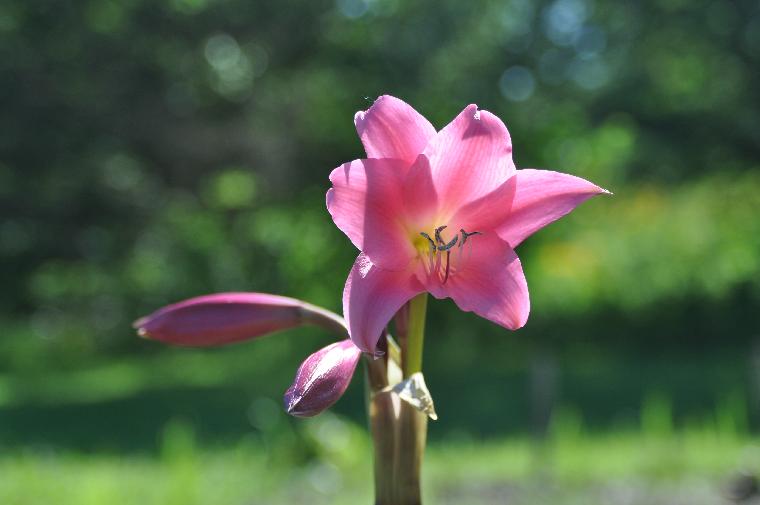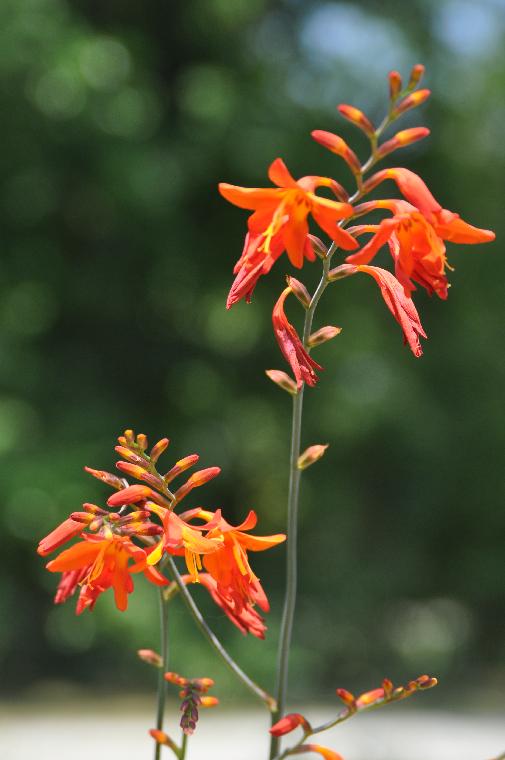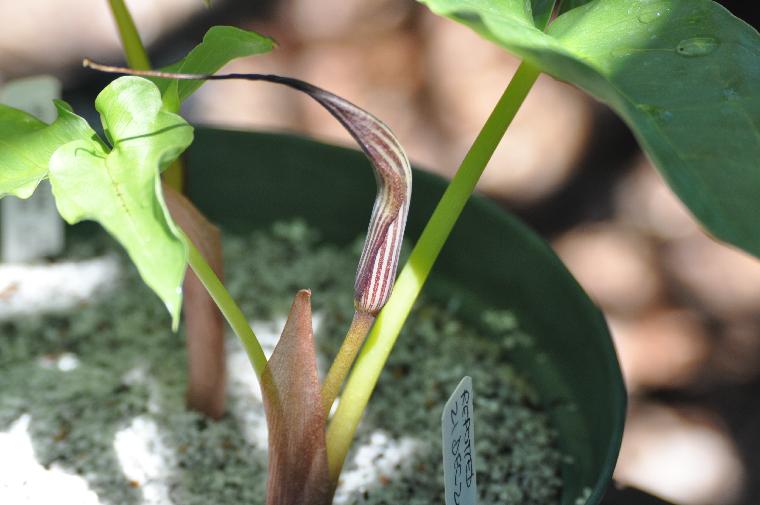Crinum
Crinum 'Catherine', Crinum 'Emma Jones', and Crinum 'Super Ellen' have been blooming!
Crinum 'Catherine' has been growing along side Crinum 'Emma Jones' just outside the greenhouse wall, along the east side, for several years. They have rarely bloomed, so I presume that even this very protected spot is almost too stressful for them to live in. Still, both have bloomed this summer. 'Emma Jones' put up one scape of pink flowers, all of which faced toward the greenhouse wall. Still, they are attractive flowers with a nice color, and their form reminds me a lot of C. moorei.
Crinum 'Catherine' (see below) is a hybrid that has star-shaped, almost completely white flowers. This clump outdid itself in bloom after its long hiatus. The current blooms are on the third flush of scapes.

Crinum 'Super Ellen'
Finally, Crinum 'Super Ellen' was a new addition to my garden last summer. I received a nice-sized bulb and planted it out in an open bed, near my hardy C. bulbispermum and in the same bed with the several mature, long-established plants of C. [variabile x bulbispermum]. 'Super Ellen' survived the winter in good shape, although the foliage was rather yellowish when it first came up in late spring. Now, it has a scape up and a flower open. I'm quite excited by the hardiness of 'Super Ellen', since the original 'Ellen Bosanquet' has always died out when left outdoors in the ground here. I might note that a sib of 'Super Ellen' called 'Sunbonnet' failed to survive the first winter in the ground here.
The plants of hardy bulbispermum have run out of new scapes, at least for now; but the plants of [variabile x bulbispermum] continue to send up occasional new scapes. The long bloom season with multiple scapes is one of the best features of these hybrids. Of course, I am fond of the rosy pink flush and the red bands, too.
Crocosmia
Old reliable Crocosmia 'Lucifer' has started blooming, and a new-comer is also blooming this year for the first time. Now here is one Barry Yinger said was hardier than 'Lucifer': Crocosmia 'Elizabethan Gardens'. I received 10 corms in September 2009 and planted them outdoors in the ground. I don't recall seeing them anytime last year, but now there is one plant in bloom.

Crocosmia 'Elizabethan Gardens'
It remains to be seen whether this new one is as hardy as some of the strains of 'Lucifer' or not. My current strain of 'Lucifer' is quite hardy, but the best one I ever had (big flowers) was too tender for my climate. This new variety has fiery red-orange flowers, in nice contrast to the deeper blood- or brick-red of 'Lucifer'.
Arisaema
I have given up growing some of the hardy species of Arisaema outdoors in the ground. I keep them over winter in a refrigerator, either potted in their pot or bare in a bit of sphagnum moss in a zip-top plastic baggie. The other day, I found some that had been in the fridge since March 2010. I took them out, potted the bare root tubers, and put all the pots outdoors. They have been watered, and most are growing vigorously again. Most are in the lath house. There are two pots of Arisaema yunnanense aridum and one pot each of A. fargesii and A. tortuosum. Every plant of hardy Arisaema that I raised from seed and planted outdoors disappeared and has never been seen again. The tortuosum, new last year from U.C. Berkeley Botanical Garden, and the fargesii are getting ready to bloom.

Arisaema fargesii
Seedling getting ready to open its first inflorescence
Undeniably hardy outdoors in the ground here are the native Arisaema tryphyllum and A. dracontium, as well as A. heterophyllum. Rather hardy here are A. ringens and A. shikokianum. Moderately hardy are sazensoo, kishidae, and urashima. A. serratum was pretty short-lived for me. I don't think I've tried any others here.
Amorphophallus
Only Amorphophallus bulbifer and A. konjac survived the winter in my greenhouse. Both A. titanum and A. paeoniifolium tubers rotted over winter. The temperatures did get down around 40°F inside the greenhouse numerous times last winter. The option of trying to grow Amorphophallus as house plants does not seem viable. I'd worry that they might reach bloom size too quickly. My wife would not find that very amusing.
Even with its bulblets produced (sparingly) on the leaves, bulbifer increases slowly. A. konjac on the other hand generates loads of tubers from the mother tuber, so I should have a batch of it to ship off to the Pacific Bulb Society's BX (bulb and seed exchange) in a year or so.
Good gardening, from here in central Indiana
Jim
Look up technical terms in the Glossary of Plant Biology